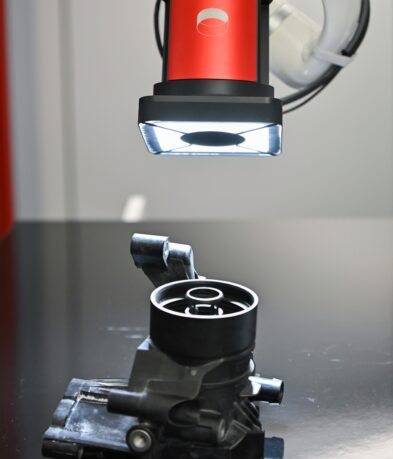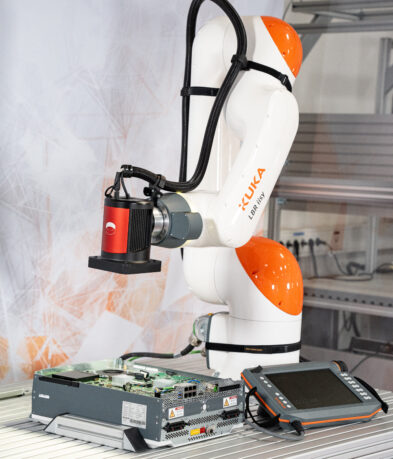Automotive industry
Juli 29, 2021
The automotive sector is incredibly complex. The average vehicle has around 30,000 individual parts, sourced from a range of suppliers. The parts are transported between different tiers within the sector, from raw materials and larger structures, to the original equipment manufacturer (OEM) for final assembly.
Why is quality assurance important in the automotive industry?
Every part that goes into a vehicle must fit and function perfectly, so manufacturers must meet high quality requirements.
Cars are inherently dangerous when not correctly constructed. Even small defects that go unnoticed during production can lead to expensive recalls for safety repairs. Quality control is therefore essential because it can spot these issues before the final product leaves the plant.
The demand for quality, global competition and market expectations puts pressure on automotive vendors to enhance quality control procedures. Moving from manual to automated inspection can improve quality assurance.
Traditional quality assurance in the automotive sector
During production, automotive parts will be transported between suppliers and tiers, who can be located around the globe. As a result, assuring and monitoring quality across a vast supply chain can be incredibly difficult.
Manufacturers often perform visual quality assurance, so that no defective products are sent on to the next tier. However, human inspection can fail to recognise defects in 25 per cent of products inspected. This is also a time consuming and labour intensive role, meaning that cost of labour is taken away from actual production.
Machine vision inspection
Investing in machine vision inspection systems can improve quality assurance. Machine vision can help to improve the quality of every component in a vehicle.
However, traditional solutions are very expensive — it can cost between £70,000 and £150,000 to deploy one project at one point on a single line. Any changes to the production line will also mean a costly adaptation to the solution and a nerve-wracking wait.
Autonomous machine vision for automotive industry
The launch of Autonomous Machine Vision as a new category in machine vision means that automotive manufacturers have a more affordable solution.
The INSPEKTO S70 is a ready to go visual quality assurance system that can be installed out-of-the-box in minutes.
Manufacturers can now install visual QA at any point of the production line without the need for a systems integrator.
Benefits of AMV in automotive applications
• Autonomous machine vision is a more cost effective solution
• Automotive manufacturers can install visual quality assurance systems at any point on the production line
• The system only requires an average of 20 to 30 good samples to work effectively
• Any quality issues that occur between major junctions will be identified and defective products can be removed from
the line
• Increased accuracy reduces wasted energy and labour spent on products that will inevitably be scrapped
• Automotive manufacturers can install TRACKS to improve traceability and prove to other businesses that parts leave
its plant undamaged.
Case study
At its plant in Waiblingen, Germany, Bosch produces plastic moulded connectors for the automotive sector. Quality management using machine vision is often difficult in plastic injection moulding applications because of the lack of contrast between the background and inspected part.
The plant had to check connectors manually. This is a tedious and repetitive jobs, so inspectors might easily become tired and fail to recognise defects.
Bosch asked Inspekto, founder of Autonomous Machine Vision, to help find a solution. Inspekto installed the INSPEKTO S70 in the plant and after a few weeks, the first system was ready for use in series production.
“The initial installation of the pilot system took about an hour, and less than a day if you factor in the small adjustments that we made to optimise the speed of the process. It took another 20 minutes to learn the software programme, and then we just had to plug in the camera and begin inspecting,” reported one of the development engineers at Bosch.
“The cost of the initial system was amortised in under a month and we could immediately see further savings and an improvement in quality. Because the pilot system worked so well, we ordered another one for our subsidiaries overseas, then another one to be installed in an older application here in Waiblingen.”

